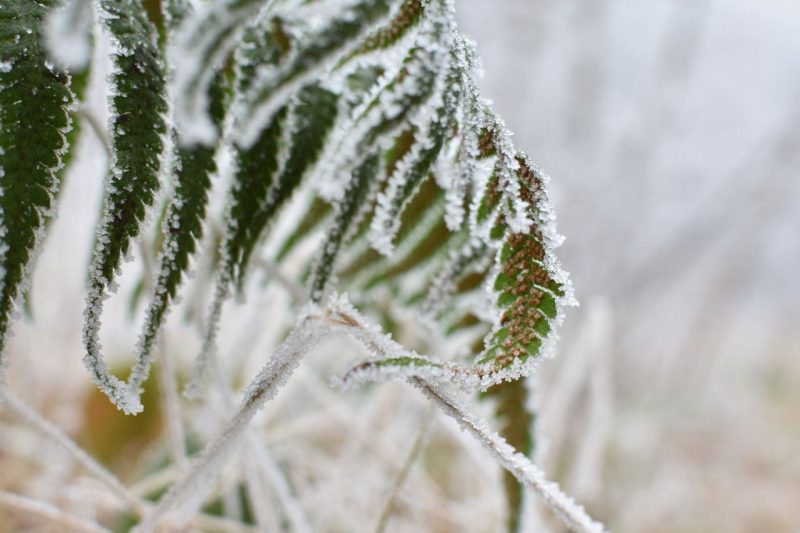Fuchsia’s Frost Vulnerability: Understanding the Risks
Fuchsias are highly susceptible to frost damage due to their delicate and sensitive nature. The tender shoots, leaves, and flowers of fuchsias are highly vulnerable to frost, which can cause significant harm to the plant’s growth and development. When frost occurs, it can lead to damaged or dead leaves, stems, and flowers, and in severe cases, even kill the entire plant. This is because fuchsias are typically grown in temperate climates and are not adapted to withstand freezing temperatures. Understanding the risks associated with frost damage is crucial to taking necessary precautions to protect these beautiful plants. Frost damage can stunt plant growth, reduce flower production, and even lead to plant death. To learn how to protect fuchsia from frost, it’s essential to understand the effects of frost on plant growth and development. Fuchsias require special care during frosty periods, and understanding their vulnerability is the first step in providing the necessary protection. By recognizing the risks and taking proactive measures, gardeners can ensure their fuchsias remain healthy and thrive throughout the year. In fact, knowing how to protect fuchsia from frost is vital to preserving the plant’s beauty and longevity. By taking the necessary steps to safeguard their fuchsias, gardeners can enjoy these beautiful plants for years to come.
Identifying Frost Danger: Recognizing the Warning Signs
Identifying the warning signs of impending frost is crucial to protecting fuchsias from damage. Gardeners should be aware of the temperature drops, wind direction, and humidity levels that can indicate frost is on its way. A temperature drop below 40°F (4°C) is often a sign that frost is imminent. Additionally, changes in wind direction, such as a sudden shift to a cold, northerly wind, can also indicate frost is approaching. Low humidity levels can also contribute to frost formation, making it essential to monitor humidity levels closely. By recognizing these warning signs, gardeners can take proactive measures to protect their fuchsias from frost damage. This may involve covering or wrapping the plants, bringing them indoors, or providing wind protection. By being aware of the signs of impending frost, gardeners can take the necessary steps to safeguard their fuchsias and ensure they remain healthy and thriving. Knowing how to protect fuchsia from frost requires a combination of preparation and awareness, and recognizing the warning signs is a critical part of this process.
How to Protect Fuchsia from Frost: Preparation is Key
Preparation is crucial when it comes to protecting fuchsias from frost damage. By taking proactive measures, gardeners can significantly reduce the risk of damage and ensure their fuchsias remain healthy and thriving. One of the most important steps in preparing fuchsias for frost protection is pruning. Pruning helps to promote bushy growth, reduce the risk of damage, and encourage new growth. Mulching is another essential step in preparing fuchsias for frost protection. Mulch helps to insulate the soil, reducing the risk of frost damage and keeping the soil warm. Additionally, providing wind protection is vital, as wind can exacerbate frost damage. This can be achieved by planting fuchsias in a sheltered location or providing a windbreak, such as a fence or wall. By taking these steps, gardeners can significantly reduce the risk of frost damage and ensure their fuchsias remain healthy and thriving. Knowing how to protect fuchsia from frost requires a combination of preparation and proactive measures, and by following these steps, gardeners can safeguard their fuchsias and enjoy these beautiful plants for years to come.
Frost Protection Methods: Covering and Wrapping
When it comes to protecting fuchsias from frost, covering and wrapping are two effective methods to consider. One of the most popular methods is to use frost cloths, which are lightweight, breathable, and can be easily draped over the plant. Frost cloths are available in various sizes and can be secured with stakes or weights to ensure they remain in place. Another option is to use blankets or sheets, which can be wrapped around the plant to provide insulation and protection. Burlap is also a popular choice, as it allows for airflow while keeping the cold air out. When covering or wrapping fuchsias, it’s essential to ensure the material is not too tight, as this can cause damage to the plant. Additionally, the covering or wrapping should be removed during the day to allow for sunlight and air circulation. By using these methods, gardeners can effectively protect their fuchsias from frost damage and ensure they remain healthy and thriving. Knowing how to protect fuchsia from frost requires a combination of preparation and proactive measures, and covering and wrapping are two effective ways to safeguard these beautiful plants.
Bringing Fuchsias Indoors: A Temporary Frost Solution
When frost is imminent, bringing fuchsias indoors can be a temporary solution to protect them from damage. To do this effectively, it’s essential to choose the right pot, as fuchsias require good drainage to prevent waterlogged soil. A pot with a diameter of at least 12 inches is recommended, as this will provide enough room for the roots to grow. When selecting a location indoors, ensure it receives bright, indirect light, but not direct sunlight, which can cause scorching. The ideal temperature for indoor fuchsias is between 50°F to 60°F (10°C to 15°C), which is slightly cooler than the average room temperature. Watering should be reduced during the winter months, as fuchsias require less moisture when they’re not actively growing. By following these tips, gardeners can successfully bring their fuchsias indoors and protect them from frost damage. This temporary solution can be a lifesaver for fuchsias, allowing them to thrive until the weather warms up again. Knowing how to protect fuchsia from frost requires a combination of preparation and proactive measures, and bringing them indoors can be a effective way to safeguard these beautiful plants.
Frost-Tolerant Fuchsia Varieties: A Long-Term Solution
While most fuchsias are sensitive to frost, there are some varieties that can withstand light frosts, providing a long-term solution for gardeners. These frost-tolerant fuchsias have adapted to survive in cooler climates and can thrive in temperatures as low as 25°F (-4°C). One popular variety is the ‘Lady Thumb’ fuchsia, which has compact growth habits and produces small, delicate flowers. Another variety is the ‘Riccartonii’ fuchsia, which has a more upright growth habit and produces larger, more vibrant flowers. When growing frost-tolerant fuchsias, it’s essential to provide them with well-draining soil and full sun to partial shade. Regular watering and fertilization are also crucial to promote healthy growth and development. By choosing frost-tolerant fuchsia varieties, gardeners can enjoy these beautiful plants year-round, without the need for extensive frost protection measures. Knowing how to protect fuchsia from frost requires a combination of preparation and proactive measures, and selecting the right variety can be a key part of this strategy.
Fuchsia Care After Frost: Recovery and Revitalization
After a frost, it’s essential to provide fuchsias with proper care to promote recovery and revitalization. Pruning is a critical step in this process, as it helps to remove damaged or dead growth, preventing the spread of disease and encouraging new growth. When pruning, remove any frozen or damaged stems, cutting back to the nearest healthy growth node. Watering should also be adjusted, as fuchsias may require less moisture after a frost. However, it’s crucial to ensure the soil doesn’t dry out completely, as this can cause further stress to the plant. Fertilizing can also help to promote recovery, providing fuchsias with the necessary nutrients to regrow and thrive. A balanced fertilizer applied at half the recommended strength can help to stimulate new growth without causing further stress. By following these steps, gardeners can help their fuchsias recover from frost damage and regain their vibrancy. Knowing how to protect fuchsia from frost requires a combination of preparation, proactive measures, and proper care after a frost, ensuring these beautiful plants continue to thrive.
Frost Protection Checklist: A Quick Reference Guide
To ensure the protection of fuchsias from frost, follow this concise checklist:
- Monitor weather forecasts for temperature drops, wind direction, and humidity levels to anticipate frost.
- Prune fuchsias before frost to promote healthy growth and reduce damage.
- Mulch around the base of fuchsias to insulate the soil and retain moisture.
- Provide wind protection using windbreaks or bringing potted fuchsias to a sheltered location.
- Cover or wrap fuchsias using frost cloths, blankets, or burlap to protect from frost.
- Bring potted fuchsias indoors during frosty periods, selecting pots with good drainage and providing adequate lighting and temperature control.
- Consider planting frost-tolerant fuchsia varieties for long-term protection.
- After a frost, prune damaged growth, adjust watering, and fertilize to promote recovery and revitalization.
By following these essential steps, gardeners can effectively safeguard their fuchsias from frost damage and ensure these beautiful plants continue to thrive. Remember, knowing how to protect fuchsia from frost is crucial to their survival, and with this checklist, you’ll be well-prepared to take on the challenge.




:max_bytes(150000):strip_icc()/grow-fuchsia-as-houseplants-1902598-7-1b05aa929d0e448dac3a7d3db0eec5b5.jpg)

:max_bytes(150000):strip_icc()/fuchsia-great-container-plant-for-shade-847937-8-5c893795c45b4e69b0bc4669cf068fd6.jpg)